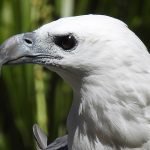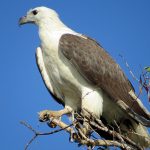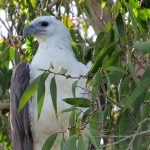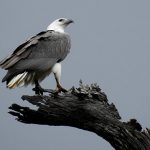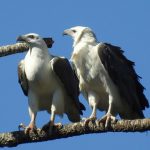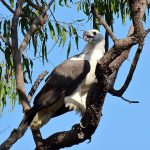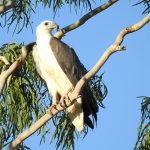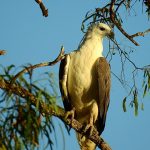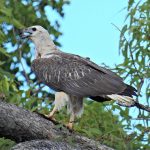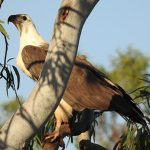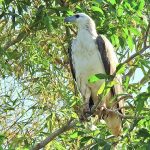WHITE-BELLIED SEA EAGLE
The White-bellied Sea Eagle is a large bird of prey found along the coastlines and inland waterways of Australia, as well as in several other countries across the Asia-Pacific region where they inhabit coastal areas, estuaries, rivers, and lakes.
These eagles are easily recognizable by their large size, distinctive plumage, and hooked beak. They have predominantly white undersides, a dark back, and a distinctive white tail. Juveniles have a mottled appearance, which gradually changes as they mature.
As the name suggests, the White-bellied Sea Eagle primarily feeds on fish. They are skilled fish hunters and often use their keen eyesight to spot prey from a perch or while soaring high in the sky. In addition to fish, they may also feed on other aquatic creatures, birds, and even carrion.
These eagles typically build large stick nests in trees near water bodies. The nests can be quite substantial and are often reused in successive breeding seasons. They usually lay one to three eggs, and both parents take turns incubating the eggs and caring for the young.
White-bellied Sea Eagles are often observed soaring gracefully along coastlines and waterways, using their broad wings and keen eyesight to search for prey. They are also known to scavenge and steal food from other birds. In some areas, they have become accustomed to human activities and may be seen near fishing boats or populated areas.
These eagles have cultural significance in various Indigenous Australian communities. They are sometimes associated with creation stories and have symbolic importance.
The White-bellied Sea Eagle is a majestic and important species in Australia’s coastal and aquatic ecosystems. Its presence and role as a top predator contribute to the health and balance of these environments.

